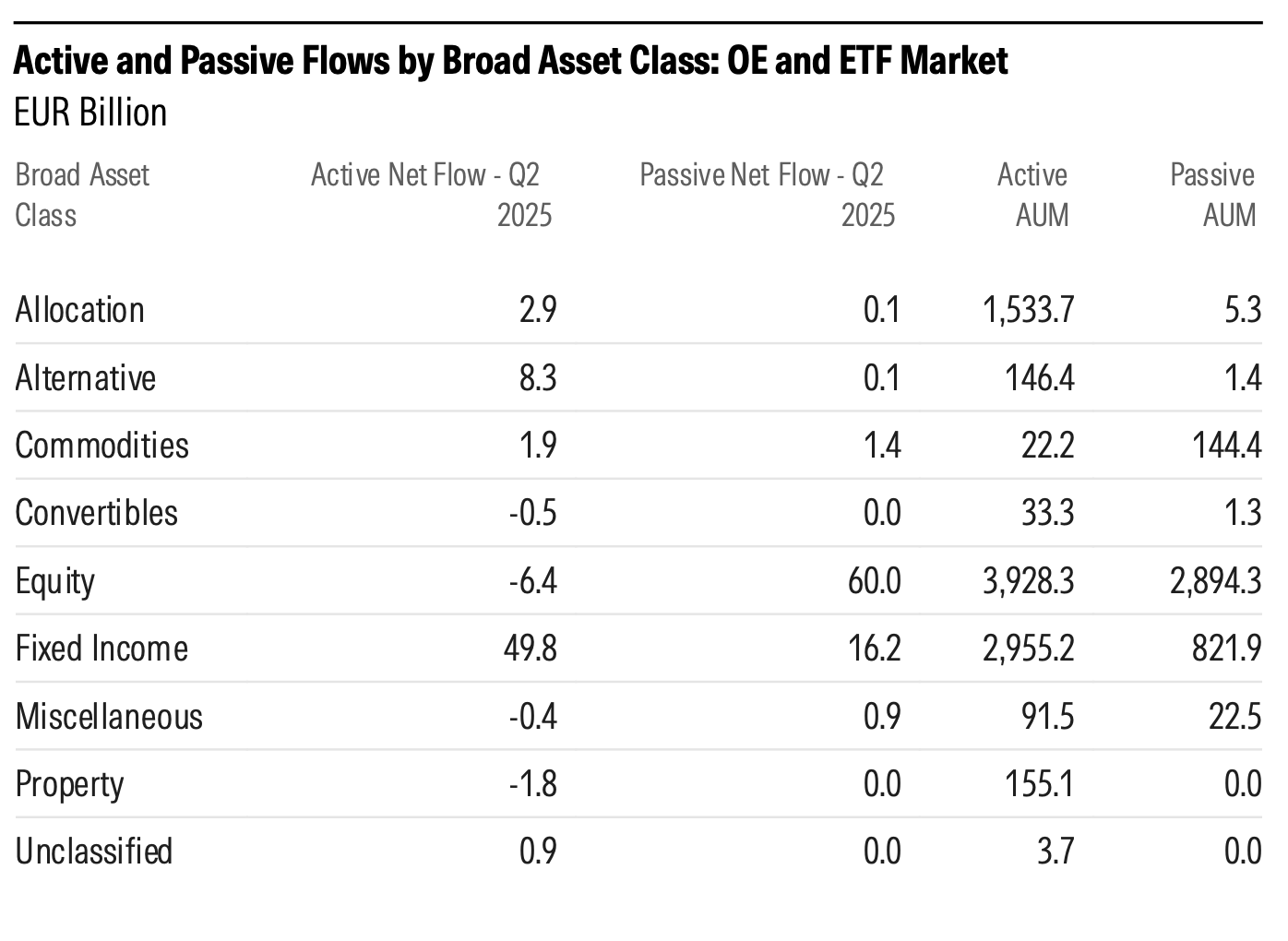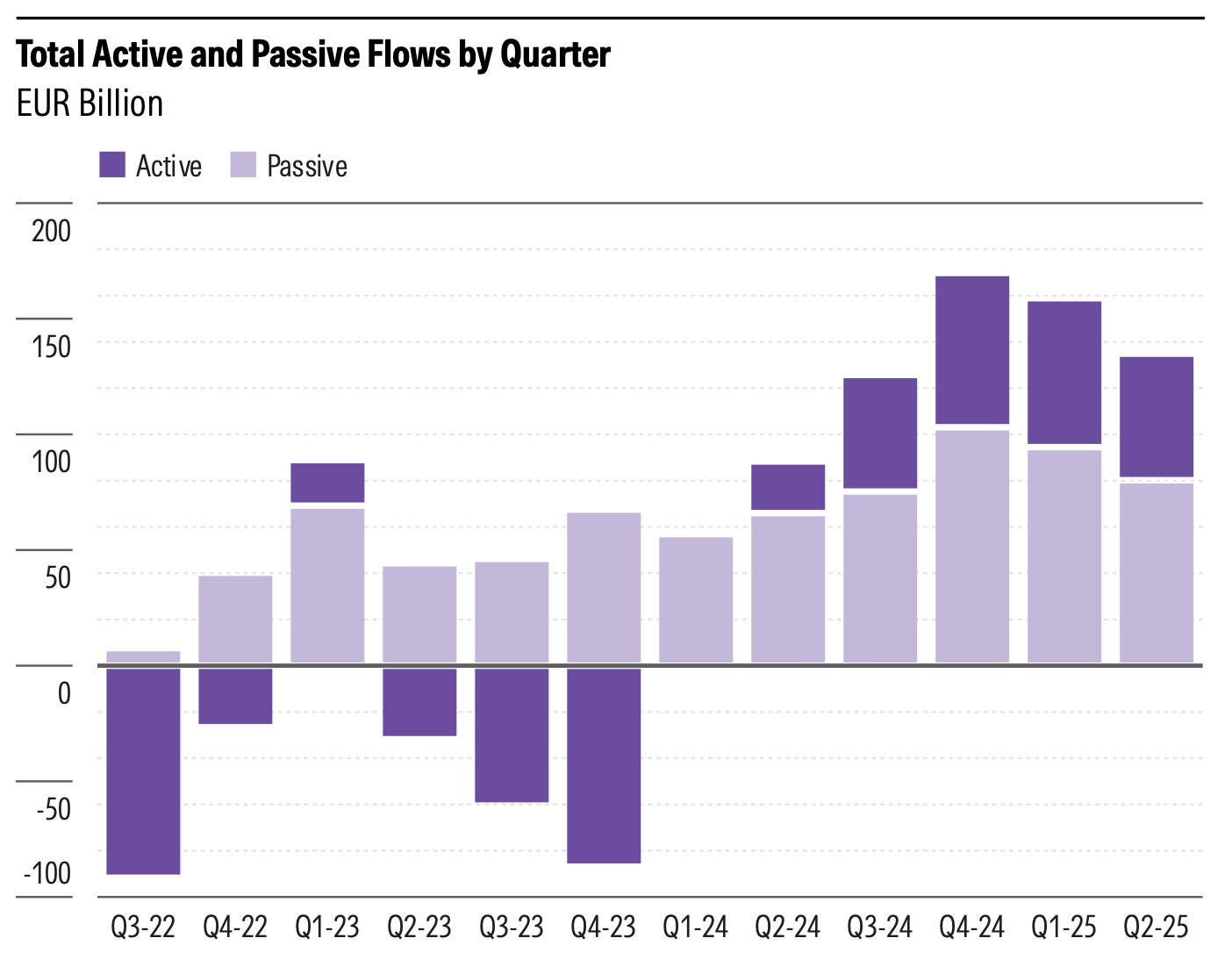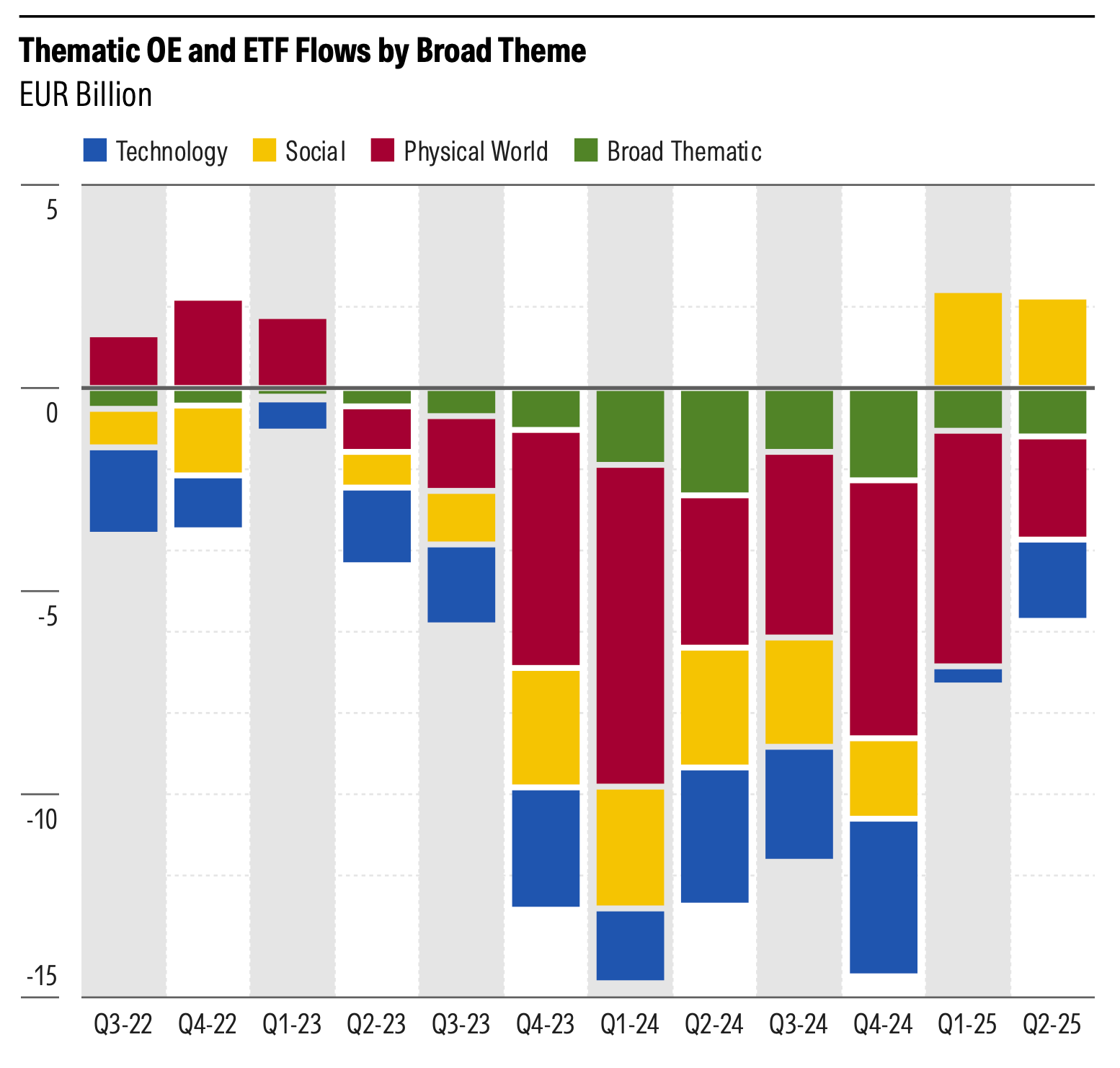7 min read
Europe OE & ETF Flows 2025: Investor Caution Drives Fixed-Income Leadership in European Flows
European funds gather EUR 131 billion in Q2, with short-term bonds and passive equity strategies dominating amid trade and geopolitical uncertainty.

Key Takeaways

Source: Morningstar Direct. Data as of June 30, 2025.
Active Versus Passive Flows
Fixed Income saw the largest active net inflow (€49.8 billion) and also had significant passive inflows.

Source: Morningstar Direct. Data as of June 30, 2025.
Total inflows were highest in Q4-24, primarily driven by strong passive flows and robust active flows.

Source: Morningstar Direct. Data as of June 30, 2025.
Thematic Funds Face Broad Outflows as Investor Interest Wanes

Source: Morningstar Direct. Data as of June 30, 2025.
Investors Display a Cautious Approach to US Dollar Equity and Bond Market Exposures

Source: Morningstar Direct. Data as of June 30, 2025.